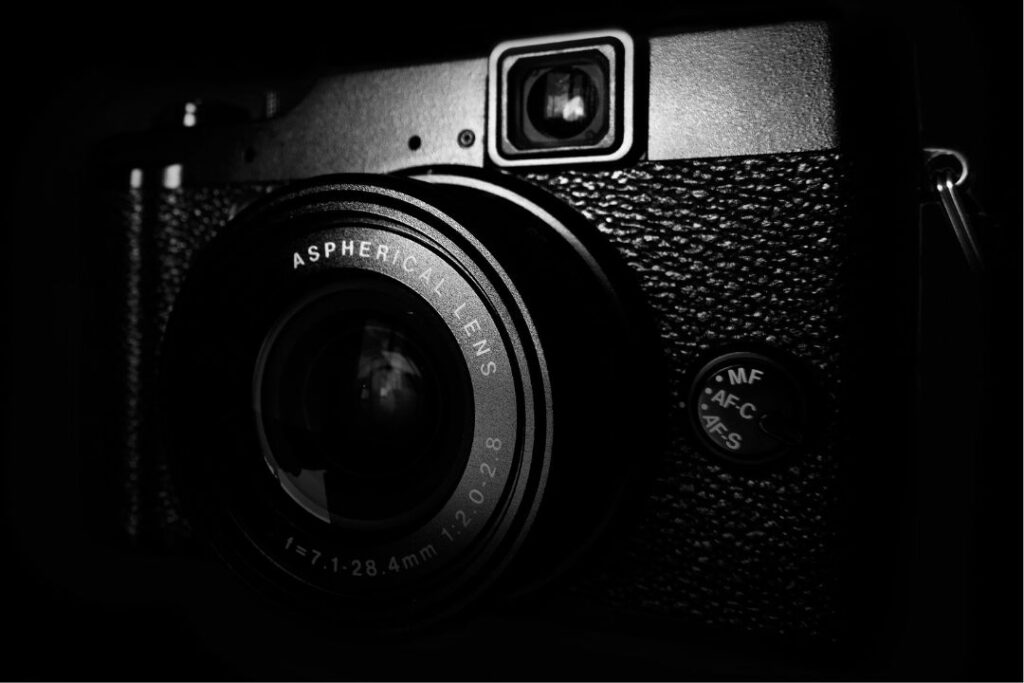
Why are Fujifilm cameras so expensive right now when, for years, Fujifilm has been known for making affordable mirrorless cameras?
Fujifilm cameras are a popular choice among visual storytellers, myself included.
And with the price of Fujifilm cameras rising recently, I wanted to explore this phenomenon to help shed light on why Fujifilm cameras are so expensive right now.
What makes Fujifilm cameras different from other cameras?
One of the main factors driving visual creators to Fujifilm is the company’s color science experience.
Fuji’s decades of color science allowed them to digitize the effects of film, re-creating iconic film stock from the ’70s, ’80s, and ’90s.
These film simulations, or Fujifilm recipes, allow photographers to create striking final images in camera.

Fujifilm cameras also use X-Trans mirrorless sensors, which, besides amazing image quality and color reproduction, also keep the camera body and lenses much smaller than a traditional DSLR.
What are Fujifilm Recipes?
Film simulations, or Fujifilm recipes as they’ve been coined, are pre-set light and color algorithms that adjust how your images look. It’s like loading “digital film” into your camera to get a specific look.
For example, Fujifilm’s VELVIA film simulation punches up the vibrance of most colors and emphasizes reds and greens. Another favorite, Classic Chrome, adjusts how blue colors are rendered, giving you a hip, magazine-like aesthetic.

The other benefit of using these film simulations is that you can see their effects in your viewfinder or LCD. This Live Preview allows you to dial in your image exactly how you want it.
And because most Fujifilm cameras give you options to adjust white balance, shadow tone, highlights, film grain, dynamic range, and more, you can create almost infinite film recipes and variations.

This eliminates the need for time-consuming photo editing and color grading and is a fantastic way to develop a consistent visual style across your work.
Check out my free Evernote Fujifilm Recipe template to help keep all your Fujifilm recipes organized.
Fujifilm Recipes Go Viral
Fujifilm digital cameras have gained popularity among TikTok influencers for a few reasons. If I had to point to one major driving force, it would be Fujifilm Recipes, made popular by Fuji X Weekly.
The camera’s ability to create striking images in camera, paired with its amazing lens quality, small size, WiFi connectivity, and trendy retro aesthetics, have all contributed to Fujifilm’s recent popularity.

This is great for the company, products, and community because it validates these features and puts creative tools in the hands of more people.
Drawbacks to Fujifilm Camera Popularity
However, the negative drawback to this surge in popularity is product scarcity and the higher prices that come with it.
This is a drawback for photographers who have been using Fujifilm products for many years or want to add new lenses or bodies to their kit. The amount I paid recently for a used Fujifilm XQ2 is a testament to that!
Also, I’ve seen some animosity toward the “trend followers” responsible for snapping up these cameras, particularly the X100V and the newly released X100VI, driving up prices.
While this irritation seems to be focused on availability and pricing, there’s also a sentiment against “posers” or other non-photographers, which I find unhelpful to the photographic and Fujifilm communities.

As smartphones introduced new people to photography, Fujifilm has also become a gateway. I encourage us as Fuji photo enthusiasts, to welcome and guide these new members instead of shunning them.
Conclusion
While the current cost of Fujifilm cameras is concerning, I think the market will normalize as time and novelty wear off.
However, I am curious to see if this uptick in interest will cause the company to target these users with more specialized offerings or if the company will adopt a more consumer-friendly approach with regard to its camera design.
I hope the company balances between serving its professional image makers and folks who want to capture fantastic images without the hassle.
Leave a Reply